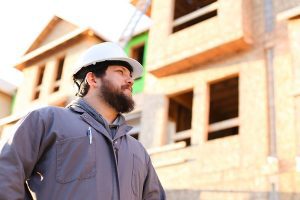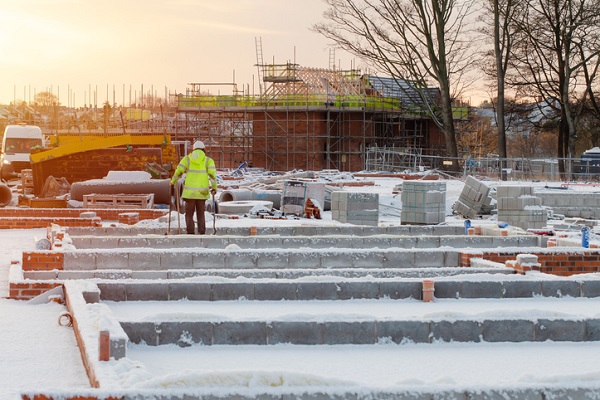Winter can be difficult for builders, especially in regions with bitter cold, harsh winds, and heavy snowfall. While some choose to close up shop during the coldest months of the year, others opt to press on through all but the worst conditions. And with new homes playing an ever increasing role in addressing the housing shortage, builders may find competitive advantages to building in the winter. To better assess your options, it pays to weigh the benefits against the costs.
The Pros of Winter Home Building
Generally, there are three pros of building homes in the winter.
1. More chances to sell homes
Building homes throughout the winter can give you more opportunities to sell homes all year. By staying active throughout the winter months, builders may be able to complete projects faster, enabling them to ride a productivity wave throughout the entire year.
2. Less competition and more serious buyers
There’s also less competition during the winter, since many builders either can’t or don’t want to work through the coldest months. Having a stock of available homes in the wintertime can help builders stand out among their competitors.
Additionally, though spring and summer are traditionally the most active times for home buyers, winter may be a chance for your building company to work with only the most serious buyers. Many potential buyers use the warmer spring and summer weather to window shop. People who are braving the elements to look for a home may be more committed to making a purchase as soon as they can.
3. Shorter potential wait for permits
Though it may be a fool’s errand to expect that government agencies will be efficient, in theory, there are fewer requests for permits in the winter. This could allow you to access permits more quickly, since there are fewer permit requests to process.
You Build it, We'll back you up.
Learn why so many builders enroll their homes in the 2-10 New Home Warranty Program.
The Cons of Winter Home Building
On the other hand, winter construction can also bring a number of headaches that put a dent in a builder’s productivity and profitability.
1. Cost
There are several extra costs that go along with winter construction, including temporary heat inside a building, heating for concrete, and snow removal. Slow digging through frost and other encumbrances can also reduce worker productivity.
2. The elements
Frost, ice, snow, and sleet can be a big frustration, especially during the foundation digging and setting stages. That said, as long as you employ proper roof truss storage on the job site, snow can actually be easier to combat when compared to spring rains.
3. Efficiency and productivity
Cold weather and diminished daylight take a toll on productivity. Equipment needs longer to warm up. It takes more time and effort to set up temporary lighting and heating equipment. Cold weather can also slow productivity by dampening worker morale.

Making a Sound Decision
When it comes to winter construction, there are different schools of thought. For some, increased costs and lengthened construction times outweigh potential benefits. On the other hand, sitting on a permit is an expensive prospect, as well.
In the end, there’s no universal right or wrong. Since every business and every project is unique, builders must weigh the specific advantages and disadvantages. If you have the budget and experience to push through trying conditions and unexpected delays, there’s no reason you can’t remain productive 12 months a year.
Whether you choose to build in the winter or not, remember that 2-10 Home Buyers Warranty (2-10) is here to back you up. With our industry-leading New Home Warranty, you can access the performance standards, profit protection, and local support you need to fulfill your warranty obligations.








